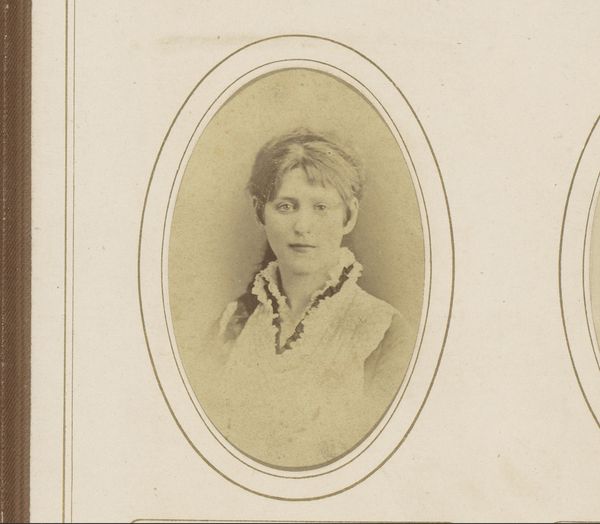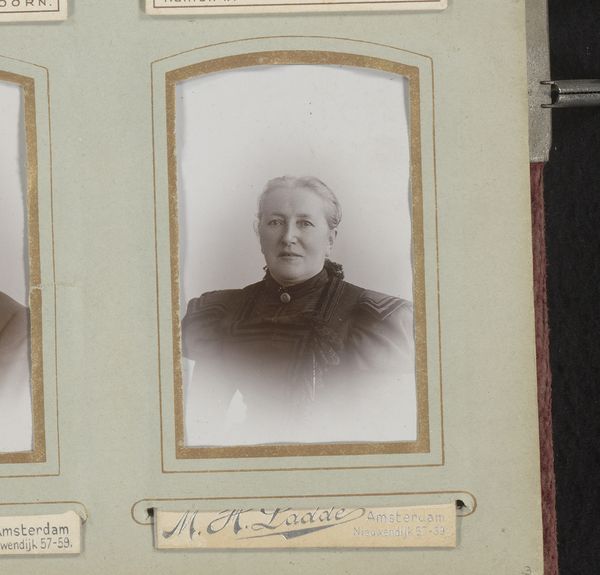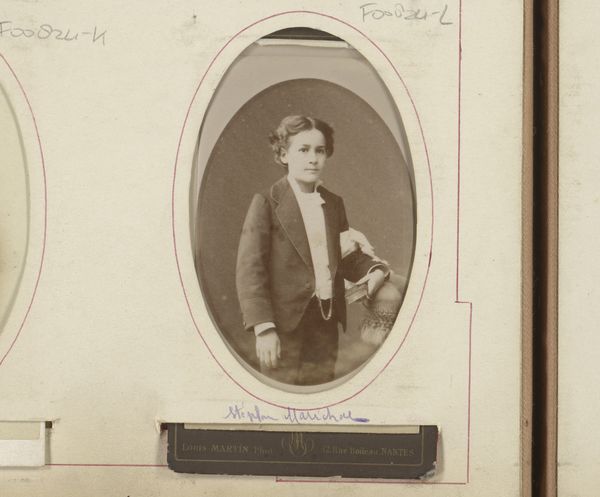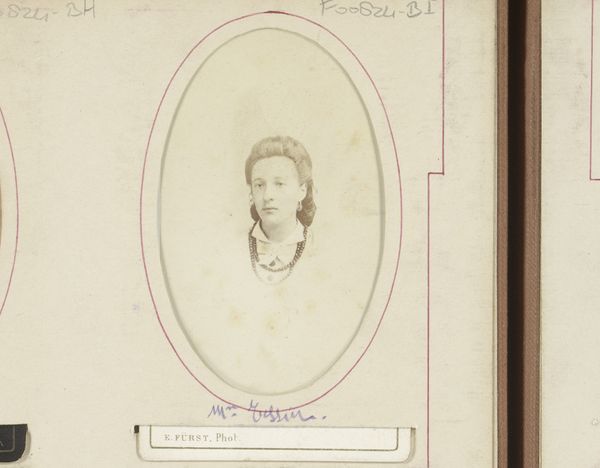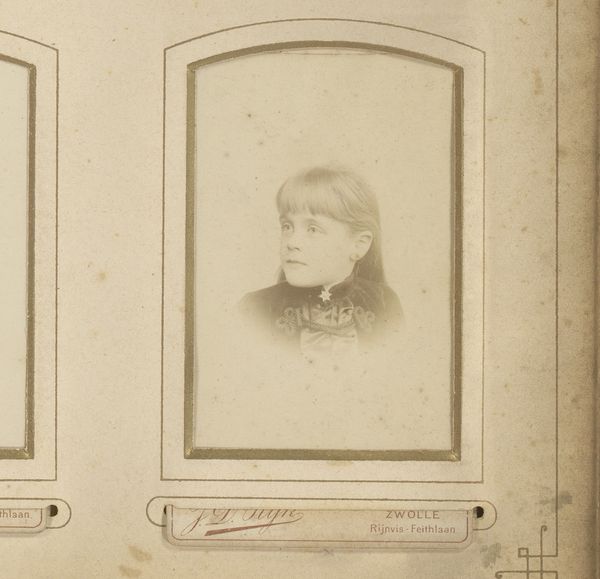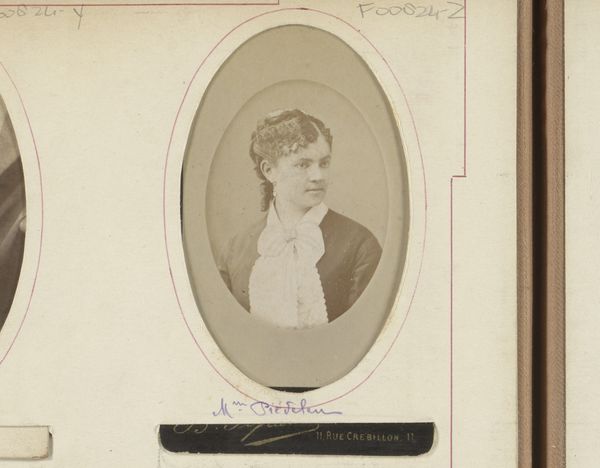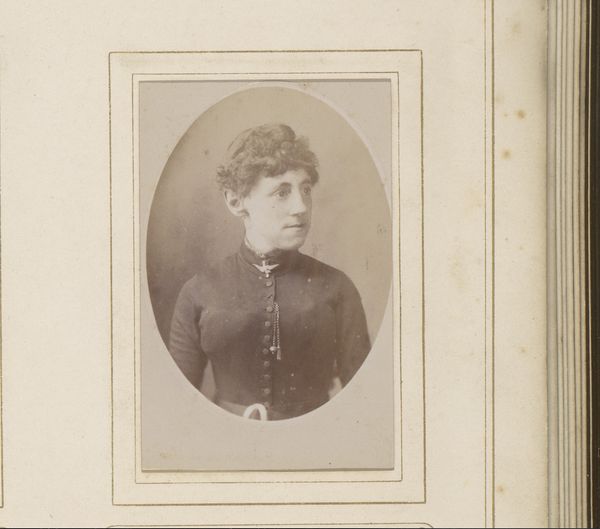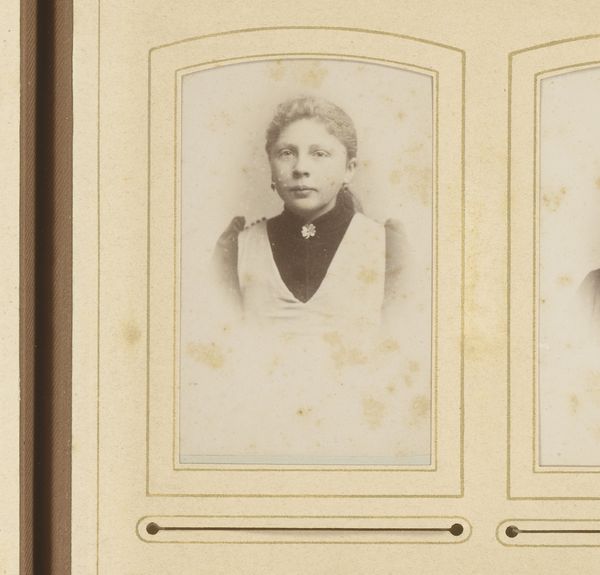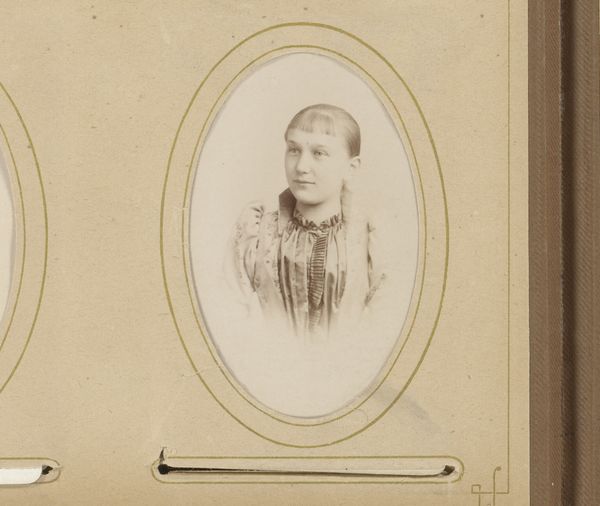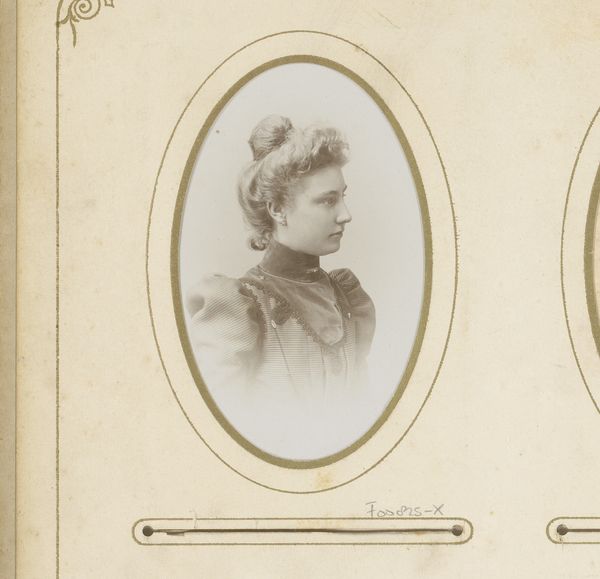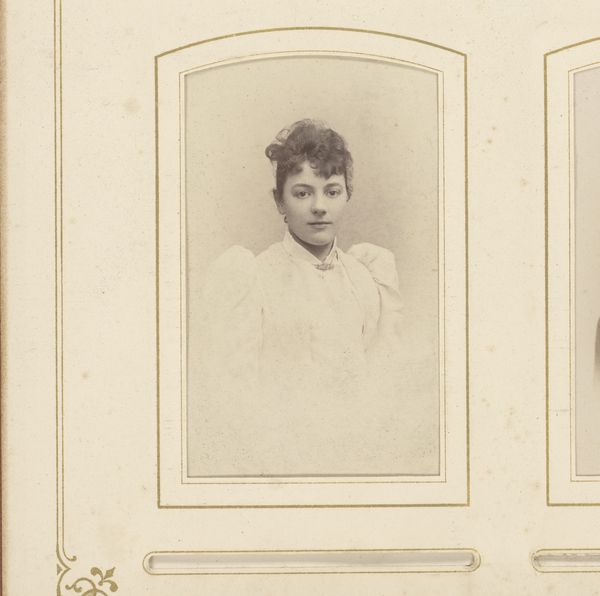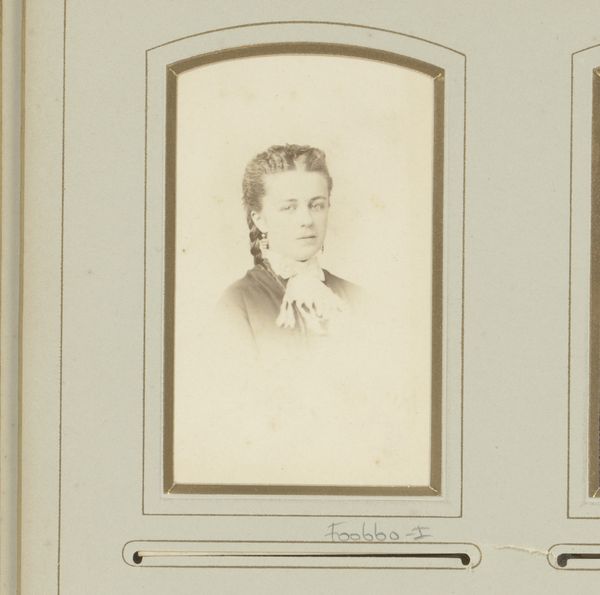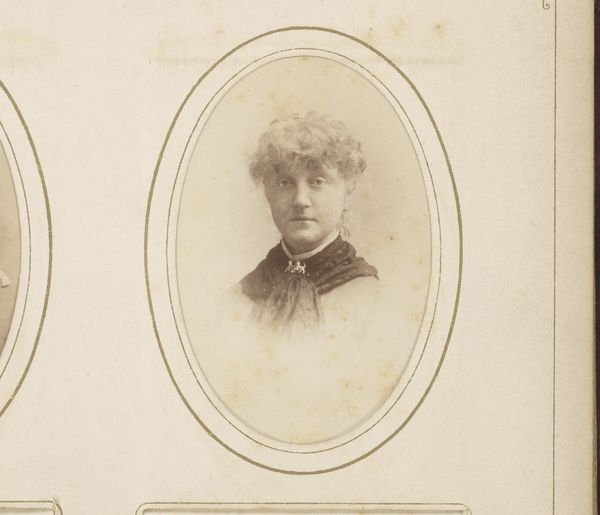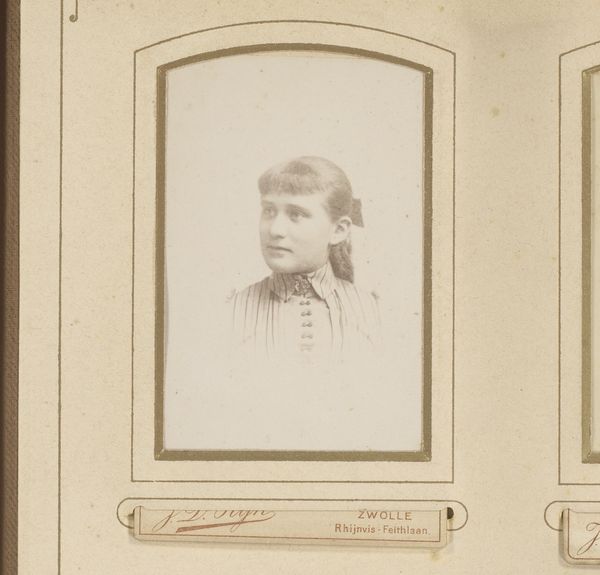
photography, albumen-print
#
portrait
#
photography
#
watercolor
#
albumen-print
Dimensions: height 104 mm, width 62 mm
Copyright: Rijks Museum: Open Domain
Curator: This is "Portret van een vrouw, aangeduid als Mme. Martin," a striking albumen print estimated to have been created between 1882 and 1900. The photographer was Louis Martin, with a studio located in Nantes. What are your first thoughts? Editor: My first impression is that she looks almost dreamlike. The soft focus and sepia tones create this lovely, gentle ambiance. Her turned head also hints at a dynamism; a life outside the frame that we're not seeing. Curator: Precisely. The composition certainly conforms to conventions of late 19th-century portraiture. Consider the sitter's attire: it reflects the bourgeois aspirations of the era, captured within a carefully orchestrated visual language of respectability. The rise of photography at the time democratized portraiture. Editor: Democratized to an extent, sure, but it's still worth remembering who had access and who could afford it. The photograph's title implying it represents a ‘Madame Martin’, what do we know about how naming or not naming empowered/disempowered sitters? What about those who could never afford such a portrayal? It seems very class-based, in that respect. Curator: Indeed, it's a valuable reminder that even this seemingly straightforward image is embedded within intricate power dynamics. However, I’m drawn to the photographer's technical expertise here. The manipulation of light and shadow showcases the craft that studios invested in for clientele. It’s clear that a certain vision of ideal womanhood and gentility was in mind. Editor: I agree about the skill on display; still, there's also something about this soft, almost hazy aesthetic that complicates that "ideal." The romantic feel, the blurring of her features makes me feel almost nostalgic about an age when time felt, or at least was percieved to be, less hurried than today. Curator: A perfect observation, indeed! When we look at photographs like this one, it forces us to contemplate our own ever-evolving understanding of portraiture. Editor: Yes, precisely. The woman herself seems to want to be understood outside the strict limitations imposed on her. Perhaps there's space there, space within her averted glance to begin.
Comments
No comments
Be the first to comment and join the conversation on the ultimate creative platform.
